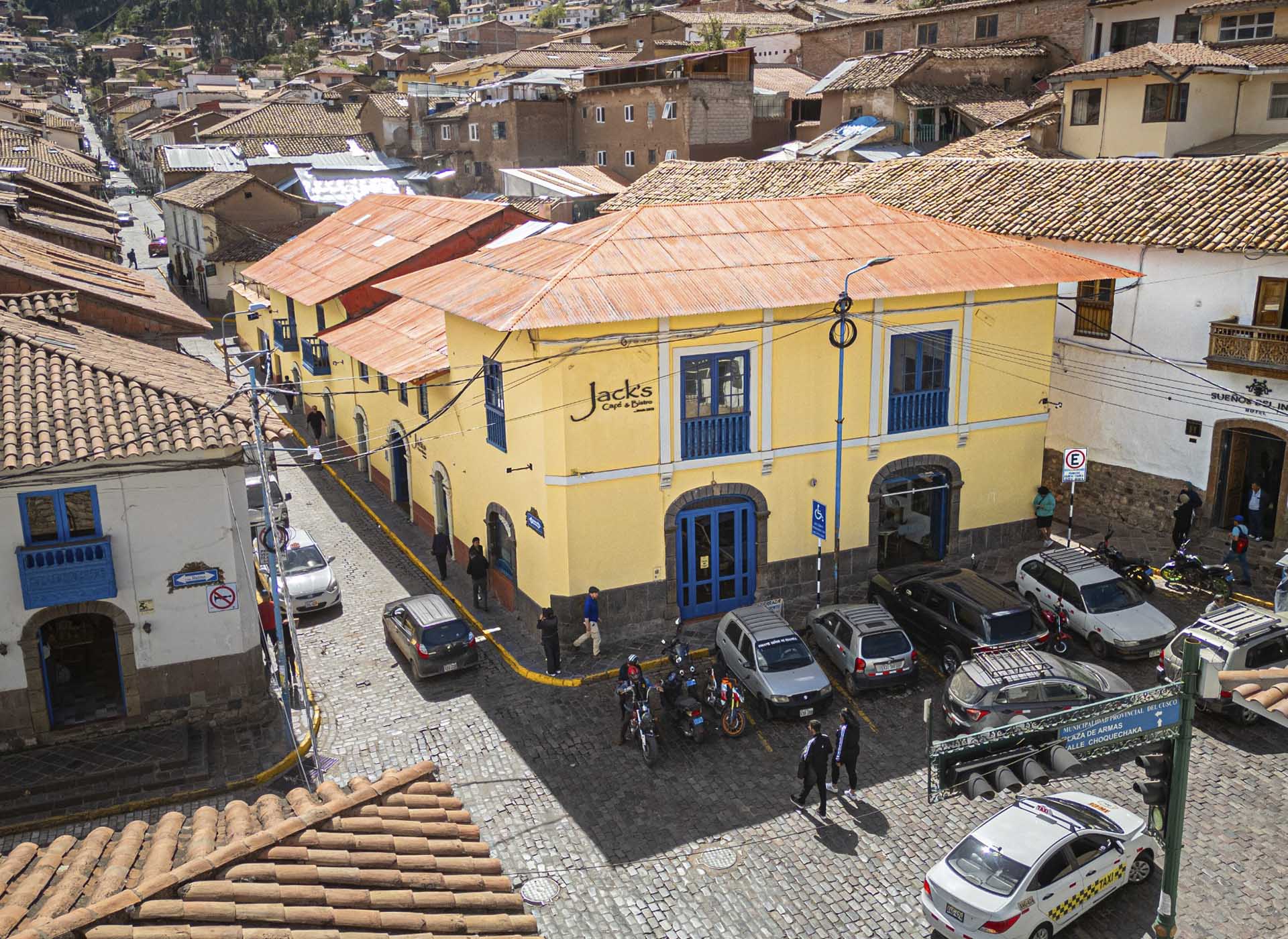When you are in Cusco you can´t miss those gorgeous places – you will love them!
- The 12-angled stone: It is located in the street Hatun Rumiyoc in the historic center. People admire it due its perfect fit in the wall, it is said that not even a needle can go in-between the stones. It is one of the highlights in Cusco and was declared cultural heritage in 1983.
- The San Blas neighborhood: It is also called “the balcony of Cusco” as it is right above the main square Plaza de Armas. On the narrow cobblestone streets can be found the best art studios and stores, which show Cusco´s history and culture graphically. When in San Blas the town´s energy and mystic can be felt clearly.
- Machu Picchu: Did you know that Machu Picchu means “old mountain”? The whole citadel contains 140 buildings, the ones standing out the most are the Intihuatana, the sun temple, the temple with the 3 windows. The construct is one of the 7 wonders of the world and is the highlight of the archaeological sites in Cusco.
- Rainbow Mountain: Did you know that it has been discovered just recently due to the receding ice on the peak of the mountain? The different colors are a product of the different minerals in the ground. It is one of the biggest sights on the way to the mountain Apu Ausangate. The National Geographic Magazine called it one of the 100 places you have to see before you die.
- Salt mines in Maras: The salt mines in Maras consist of 5.000 small pits, which are about 5 square meters each. When the time to drought the pits has come, they get filled up with water from natural springs and once the water evaporates the salt crystallizes. Reaching a considerable height the salt is removed to be bagged and sold.
- Ollantaytambo: Ollantaytambo means: “place to relax from where observations can be made from above”. Ollantaytambo is the only Inca village which is still inhabited today. The buildings were built by Pachacútec, who was the ninth leader of the Inca Empire. During the Spanish conquest the citadel in Ollantaytambo was the only place at which the Incas withstood the Spanish attack successfully.
- Qoricancha: It is also known as the “sun temple” as it was the place where homage was paid to the most important Inca god “Inti” (sun). “Qoricancha” means “enclosed space containing gold”. On the inside the main deities and the wonderful flora and fauna of Peru were represented in gold and silver. These sculptures were looted by the Spanish conquerors, who arrived in Cusco in 1533. Today, the Santo Domingo convent uses the original walls of the Inca temple Qoricancha as its base.
- Cristo Blanco: It is located in the northeast of Cusco on the mountain Pukamoqo, meaning “red mountain”. In the Inca Empire the mountain was considered as holy, because from there the entire land of the Tahuantinsuyo could be seen. The sculpture is made of white plaster which makes it stand out at night, it is 8 meters high and was built by the local sculptor and filmmaker, Francisco Olazo Allende.
- Plaza de Armas: It was a marshy area that was dried up during the time of the Inca Empire, for which sand from the coast of the Empire was used. With the arrival of the Spaniards Paza de Armas was surrounded by temples and mansions, which were built on the structures of Inca palaces and buildings. Tupac Amaru II was also executed there, he is a figure of the Peruvian history, who rebelled against the Spanish invasion. The main square also included the area where today are the squares Regocijo and Espinar. The two areas were separated by the stream Saphi.
- Humantay Lagoon: The Mountain Humantay is part of the Vilcabamba mountain range, is covered with snow and hosts at its foot this beautiful turquoise colored lagoon. The lagoon is fed by glaciers located on the route of the Apu Salkantay. Only brave people dare to go into the ice cold water of this lagoon. According to the residents the mountain Humanty is the youngest son of the Apu Salkantay and that it is in charge of streamlining and distributing the water coming down from the snow to the populations living at the foot of theses impressive snowcapped mountains.




About The Author
admin